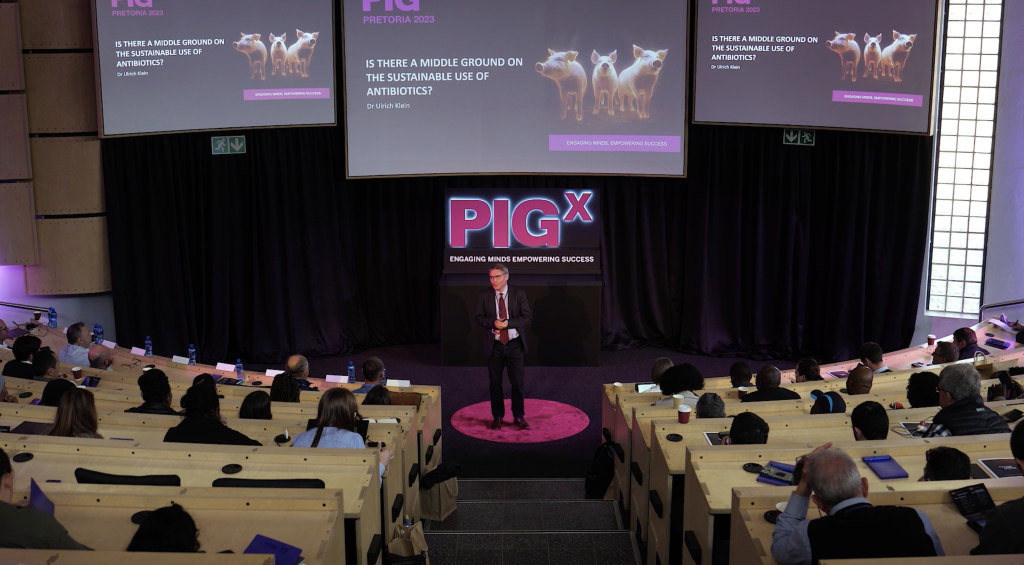Antimicrobial resistance calls for sustainable and responsible antibiotic use, alongside strategies that prioritise disease prevention and optimise animal health, while meeting consumer expectations and market demands. Europe’s responsible and sustainable use of antibiotics, coupled with resistance monitoring programmes, can guide South Africa’s pork industry towards the best approach. Dr Ulrich Klein, global product manager for therapeutics at Huvepharma N.V. will assist in guiding our thinking.
“The European Union (EU) has an antimicrobial resistance One Health Network in place with the objective to stop the development and spread of resistance for antibiotic products,” said Dr Klein. The use of antibiotic products is regulated by specific EU guidelines. “Prudent use has to be established, the administration of first-priority antibiotics for human medicine is restricted, and the use of pharmacokinetic/pharmacodynamic (PK/PD) minimum inhibitory concentration (MIC) data is the key element for treatment justification.”
He said MIC data on a broad range of antibiotic products and bacterial pathogens are generated on a routine basis in Europe based on to internationally approved antimicrobial susceptibility testing methods.
“For veterinary practitioners, MIC data interpretation based on clinical breakpoints and knowledge of the pharmacokinetic behaviour and characteristics of antibiotics, are essential for the selection of the most effective antibiotic for therapeutic purposes.”
According to Dr Klein, tiamulin MIC data generated on Mycoplasma hyopneumoniae isolated from seven different EU countries over a period of eight years indicate consistently low MIC values (MIC90:0,062 µg/mL) with no trend on MIC value increase. “The tiamulin lung concentrations achieved at treatment dosages after feed and water medication exceed the determined MIC values. Excellent clinical effects can be expected in the case of tiamulin medication against enzootic pneumonia (EP) and for EP eradication.”
Dr Klein noted that tilmicosin pharmacokinetics in pigs are characterised by much higher accumulation of tilmicosin in the macrophages compared with other macrolides and antibiotic drugs. “The tilmicosin macrophage concentration over a longer period and the tilmicosin lung concentrations are higher than determined tilmicosin MIC values for several respiratory pathogens, including Mycoplasma hyopneumoniae, Glaesserella parasuis, Pasteurella multocida, and Actinobacillus pleuropneumoniae. Tilmicosin`s therapeutic use in the presence of these pathogens can be recommended,” he said.
He said MIC testing of Lawsonia intracellularis strains is complicated. “Worldwide, MIC data on only a limited number of strains (17 L. intracellularis isolates from Europe, the United States, Thailand, and Brazil) are available. The L. intracellularis strains show highest susceptibility against tylosin. The available PK/PD data explain the therapeutic success of tylosin administration observed in the field in cases of ileitis treatment.”
European Escherichia coli strains show high susceptibility against apramycin, according to Dr Klein. “Based on the high apramycin concentration in the small intestine as shown in pharmacokinetic studies, the use of apramycin can be considered as the ideal E. coli therapy.”
Dr Klein concluded saying that tiamulin, tilmicosin, tylosin, and apramycin pharmacokinetic and pharmacodynamic data predict excellent efficacy against several respiratory and enteric infections in swine at therapeutic dosage.
“The use of those PK/PD data helps to minimise therapeutic failures, to sustain antibiotic efficacy long term, and to prevent resistance development against these antibiotics.”
The South African Pork Producers’ Organisation (SAPPO) coordinates industry interventions and collaboratively manages risks in the value chain to enable the sustainability and profitability of pork producers in South Africa.
















